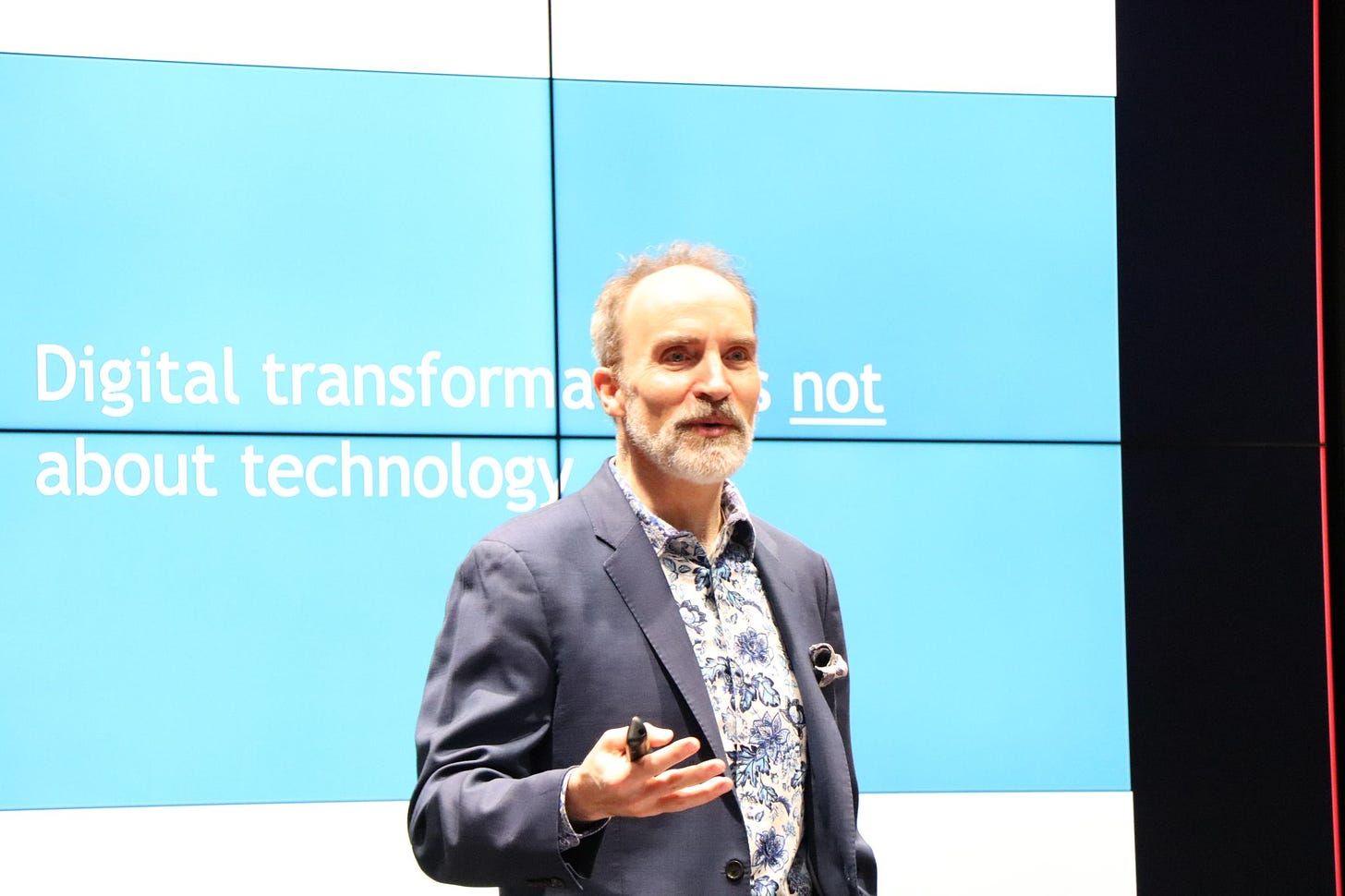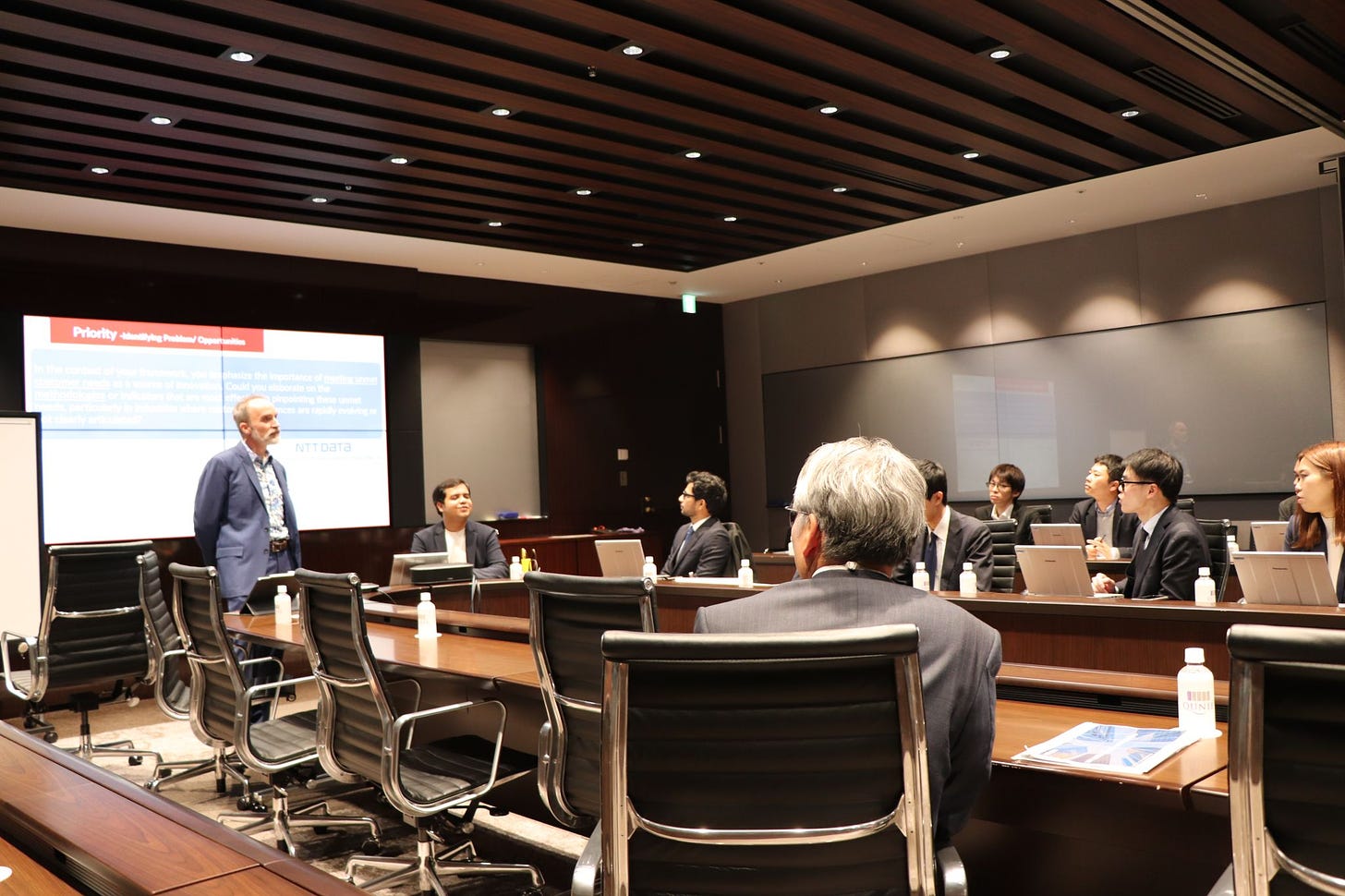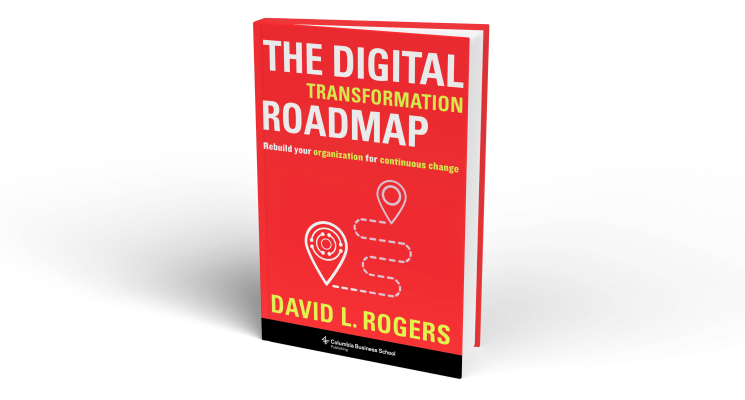Your Company Is Unique. Just Like All the Others.
Lessons on transformation from Japan (and megaprojects)
According to legend, the famed anthropologist Margaret Mead would tell each of her students, “You are absolutely unique. Just like everyone else.”
I rediscovered this quote in the book “How Big Things Get Done” by Bent Flyvbjerg, an expert on megaprojects (think: nuclear power plants, hydroelectric dams, bridges, airports, and undersea tunnels).
In his book, Flyberg explains that megaprojects often go wrong because leaders focus too much on what makes their project unique—and focus too little on what they have in common with other projects.
I have found a similar pattern in my own conversations with leaders around digital transformation (DX).
“You have to understand Japanese business culture…”
I’m thinking again about the question of what does, or does not, make a business unique because I recently returned from Japan.
While there, I had the opportunity to lead roundtable discussions with executives from legacy Japanese firms, as well as young consultants who will be the next generation of DX leaders in Japan.
Time and again, as they sought my advice on digital transformation, they prefaced their questions by explaining that DX is particularly difficult for Japanese companies, because of the unique problems that they face.
Then, as I listened, they would recount the same problems I hear from every organization that I talk to about transformation.
They described to me how Japanese companies are:
Hierarchical—where they need to be bottom-up and entrepreneurial
Cautious—where they need to be risk-taking
Comfortable managing the core business—but unfamiliar with managing new ventures
Uncomfortable with experimentation—and wedded to traditional planning
In each forum, I was asked excellent questions, such as: How do we shift the culture of our organization? How do we educate senior leaders on digital thinking? How do we become better at experimentation, defining strategic priorities, and identifying unarticulated customer needs?
Every one of their questions led to great, productive discussions.
And these were remarkably similar to the discussions I’ve had over the last year in Amsterdam, New York, Quito, Hanoi, and elsewhere.
Learning From Others
Flyvbjerg’s point for leaders of megaprojects is that they should not pass up on the opportunity to learn from the experience of others.
Because even though your undersea tunnel may be the first in the world with its particular design challenges, there will be much to learn from others who have worked through megaprojects that, on the surface, might appear quite different.
This is why, in my on-campus executive programs at Columbia Business School, we intentionally mix participants into small groups from diverse backgrounds: an African insurance company, a legacy European telco, a Chilean software developer, an American military contractor, etc.
With the right frameworks to guide them, these leaders gain tremendous insights from working together—as they compare notes on the challenges they face, and the strategies for change they are pursuing, in each of their organizations.
Which Factors Matter Most
So, are there any factors that do matter more in DX? What does make certain organizations particularly resistant to change?
Many executives that I meet believe that their biggest challenges stem from:
National culture—whether being Japanese, Brazilian, or Qatari
Age of the company—with a legacy culture ingrained over time, where a 100-year history becomes an excuse for saying “that’s not how we do things here”
Industry factors—intensity of regulation, competitive dynamics, or the importance of fixed assets vs. human talent or intellectual property
I think they are wrong. Let me be clear: the above factors do matter. They will definitely shape your own particular journey to digital transformation.
But…
As I previously discussed with Wharton’s Ann Greenhalgh, the biggest driver of inertia and difficulty to change is organizational complexity.
And organizational complexity is mostly shaped, NOT by nation, age, or industry, but by three more structural factors:
Number of employees
Diversity of lines of business
Diversity of geographies of operation
And so…
A large Japanese company operating multiple lines of business in different markets will face remarkably similar challenges to a company half its age, in a different industry, headquartered in Mexico—if it has similar numbers of employees, business lines, and markets of operation.
The Roadmap for DX in Japan
I am extremely excited that “The Digital Transformation Roadmap” will be published this May in a special Japanese edition, with additional commentary and local case studies for the Japanese market.
Today, DX is critical to business in every region of the world, but it is of particular interest and importance in Japan.
Japan can be rightly proud of its role in the global economy. But Japanese business differs from the United States—where new companies like Alphabet and Amazon quickly overtake older ones like GE and Ford Motor. By contrast, Japan’s economy continues to be driven by its long-established businesses.
It is therefore critical that established Japanese businesses lead the way in new digital products, services, and business models. And that can only happen with digital transformation of these companies.
Japanese businesses have had a leading role in prior revolutions in management—with their focus on agility, flexibility, and alignment at scale. The opportunity I see now is for Japan to be part of the next wave of management reinvention—to rebuild established organizations for success in the digital era.
In the years ahead, emerging technologies, changing customer expectations, and new business models will continue to reshape our world.
My hope is that the Japanese edition of “The Digital Transformation Roadmap” will give the country’s business leaders the tools to rebuild their organizations to thrive amidst that continuous change.
NEW BOOK:
“THE DIGITAL TRANSFORMATION ROADMAP: Rebuild Your Organization for Continuous Change”
ORDER NOW:
Hardcover: https://amzn.to/41U85dl
Kindle: https://amzn.to/3OWD437
Audiobook: https://bit.ly/DXR-Audiobook
Bulk orders up to 60% off: https://bit.ly/DXR-bulk-orders









